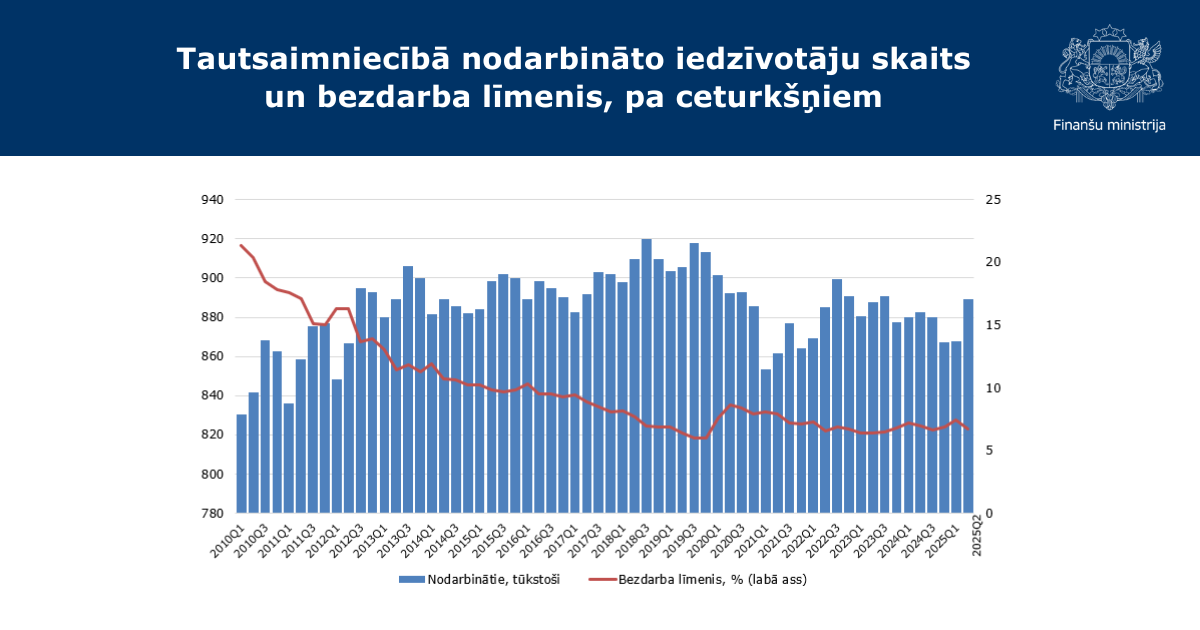BAKU, Azerbaijan, August 15. Latvia’s economic
growth has been on the fast track in the first half of this year,
and it’s showing its colors in the labor market as well, Trend reports.
In the second quarter, the number of employed persons increased
by 6,900, or 0.8 percent, compared to the same period last year,
while the unemployment rate dropped by 0.2 percentage points to 6.7
percent, according to the latest labor force survey data from the
Central Statistical Bureau.
A similar decline in unemployment was indicated by the State
Employment Agency’s registered unemployment data. This summer, the
number of registered unemployed fell to a historic low of just
above 43,000. By the end of July, the registered unemployment rate
had decreased to 5.0 percent, down by 0.2 percentage points
compared to the same month a year earlier.
The growing appetite for labor has certainly set the wheels in
motion for economic activity, with the workforce swelling by 4,800,
or 0.5 percent, year-on-year in the second quarter. This growth in
activity was the main factor behind the significant increase in
employment, while a smaller part of the improvement was due to the
reduction in unemployment by 2,100, or 3.2 percent.
The writing is on the wall, as demographic trends and the
dwindling working-age population will keep casting a long shadow
over economic activity and employment indicators moving forward. On
one hand, decreasing labor supply and rising demand—along with
higher wages—will encourage more people to enter the labor market,
raising activity levels. On the other hand, the total number of
employed is expected to remain stable or slightly decrease due to a
shrinking working-age population.
In alignment with the latest macroeconomic projections
disseminated by the Ministry of Finance in early June, a
contraction of 0.2 percent in the labor force participation rate is
anticipated for both the current fiscal year and the subsequent
one. Concurrently, the labor market indicators suggest a trajectory
of diminishing unemployment rates; however, considering the
elevated metrics observed in Q1, the annualized average for 2025
may stabilize around the previous year’s benchmark of 6.9 percent.
In the ensuing years, a more accelerated contraction is projected,
with the unemployment rate potentially descending to 5.5 percent by
the year 2029.
Stay up-to-date with more news on Trend News
Agency’s WhatsApp channel
